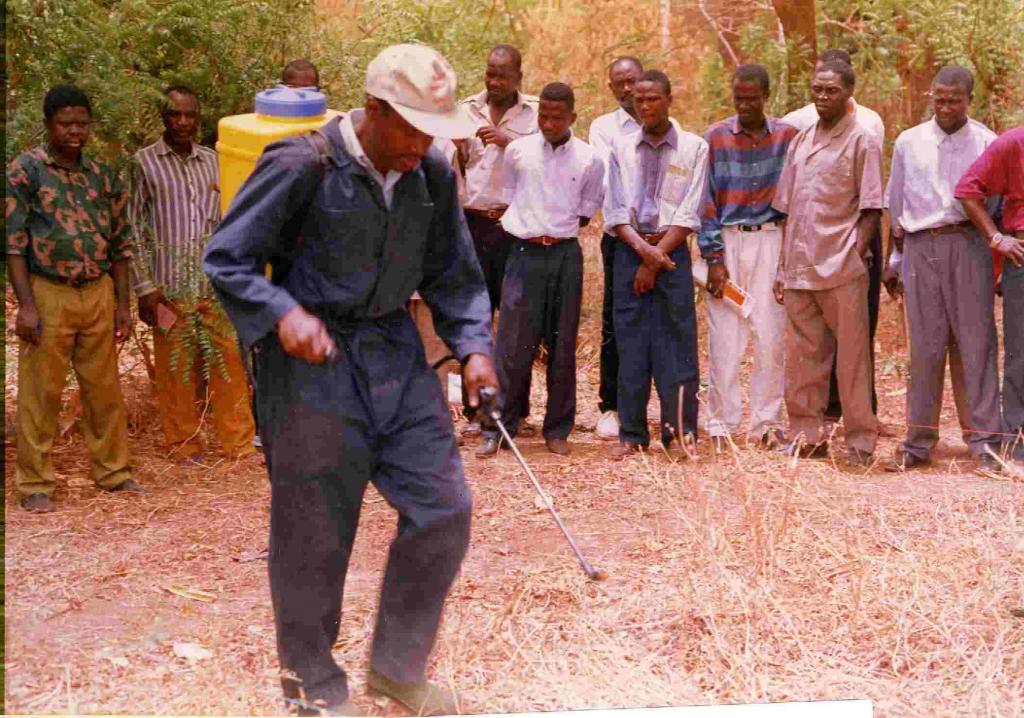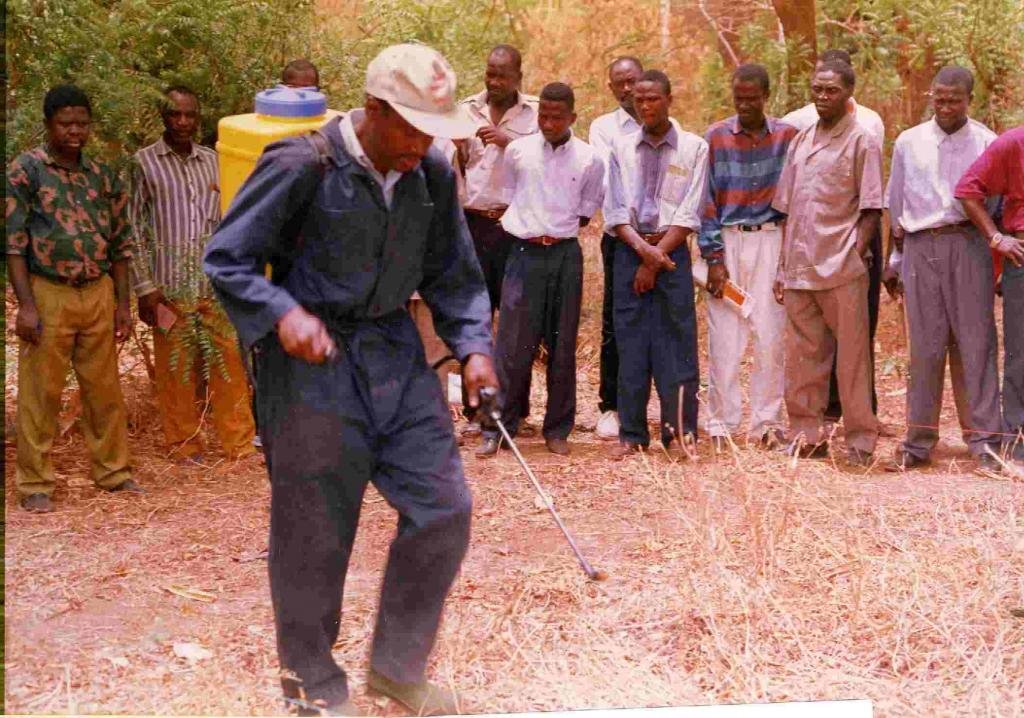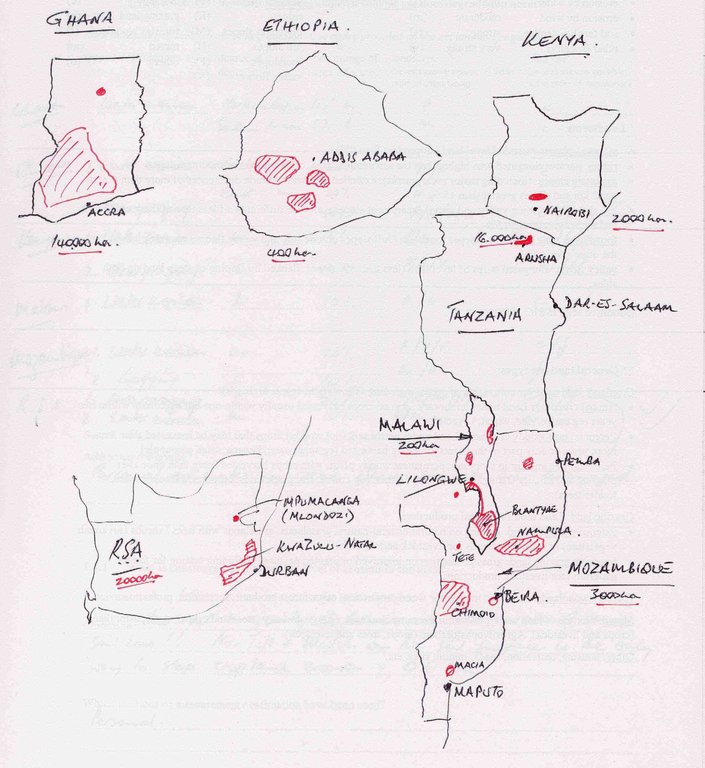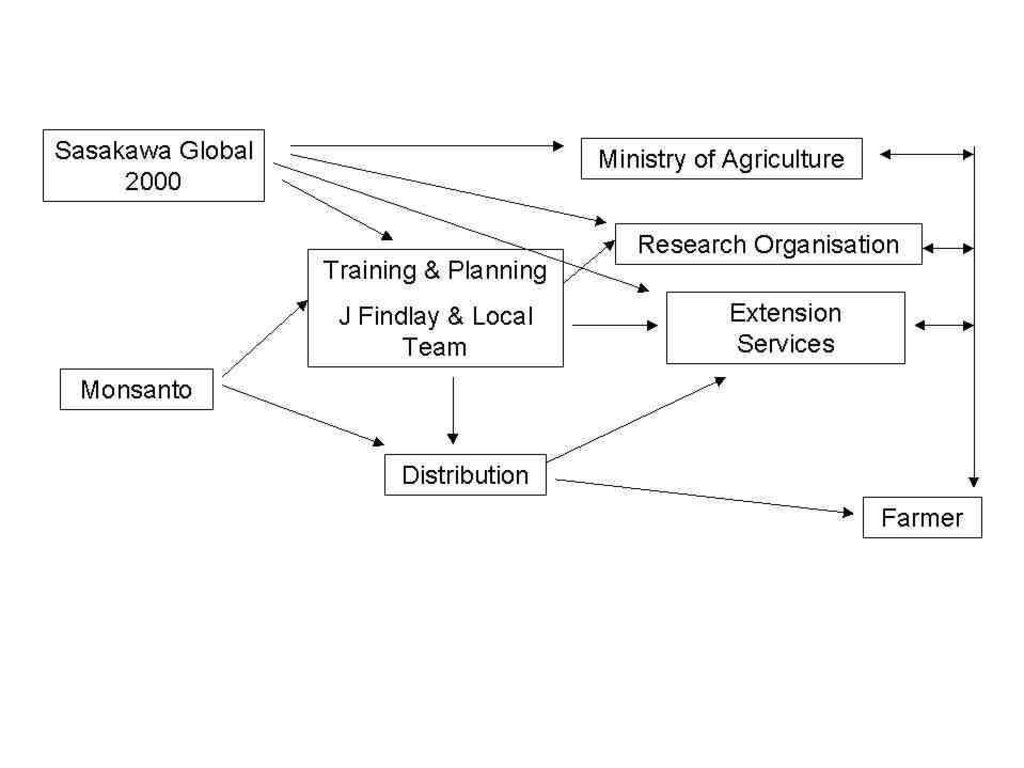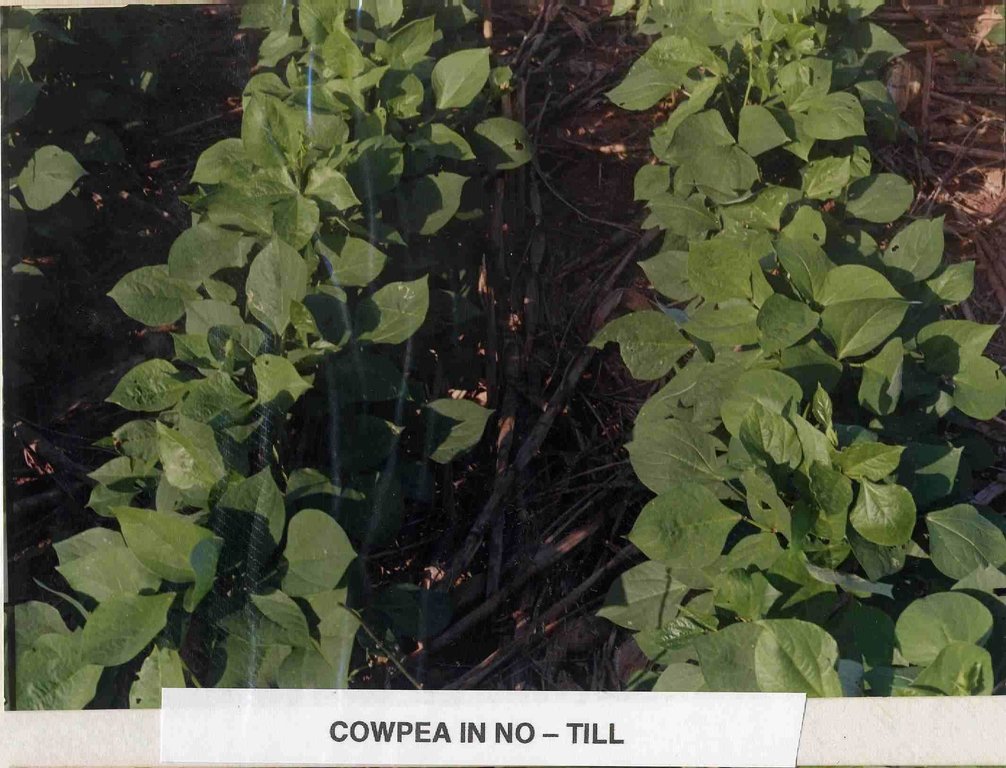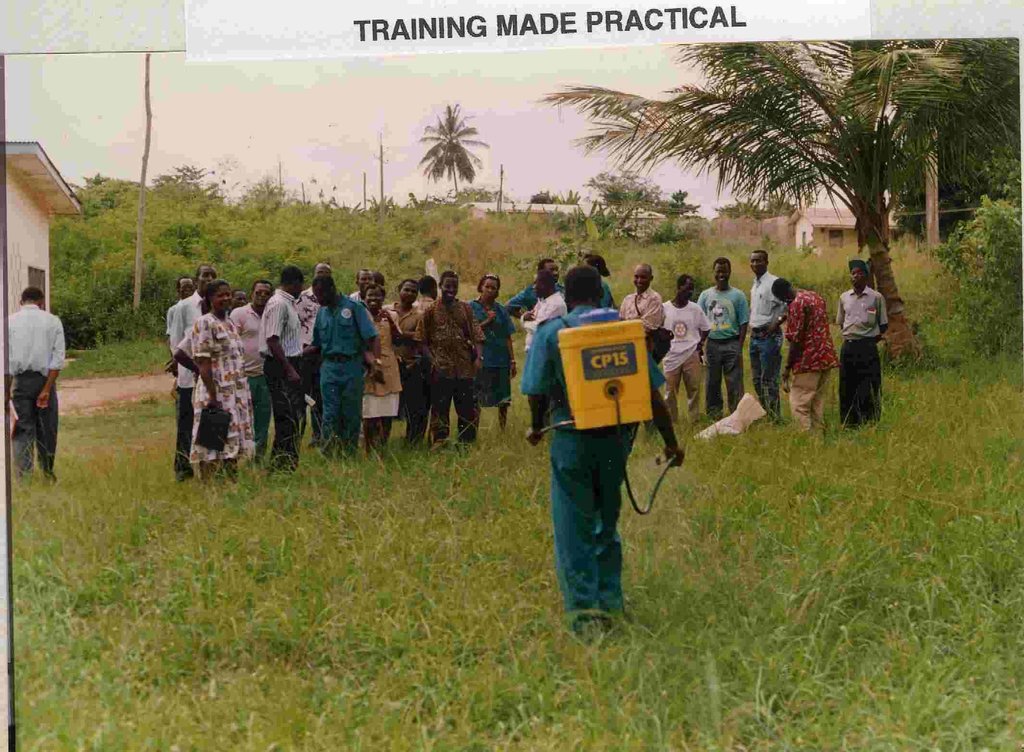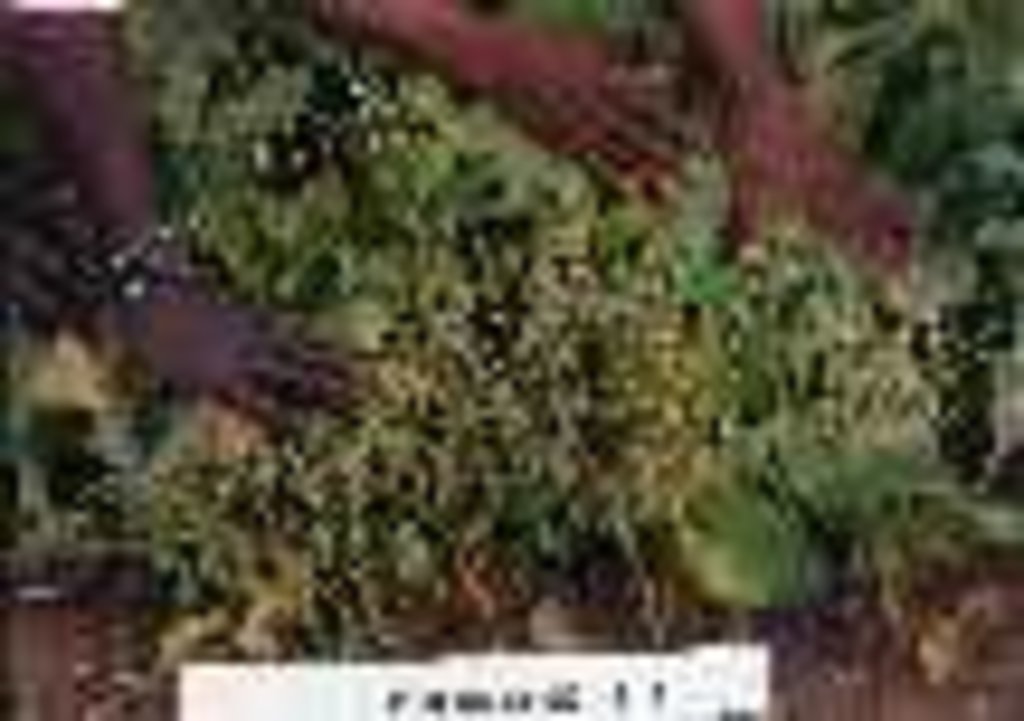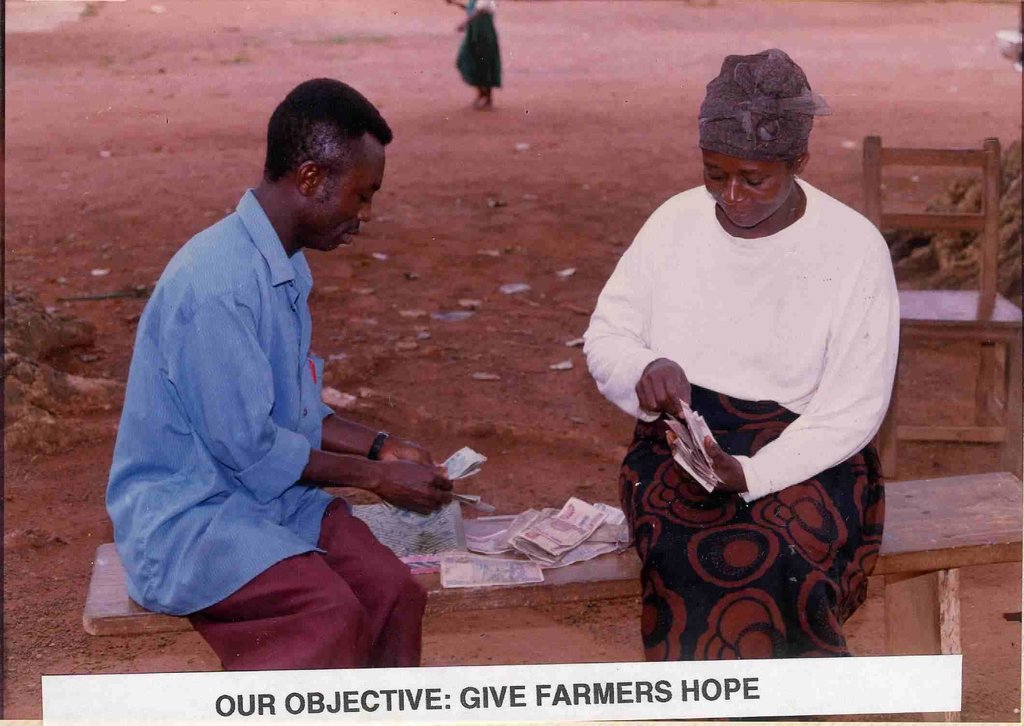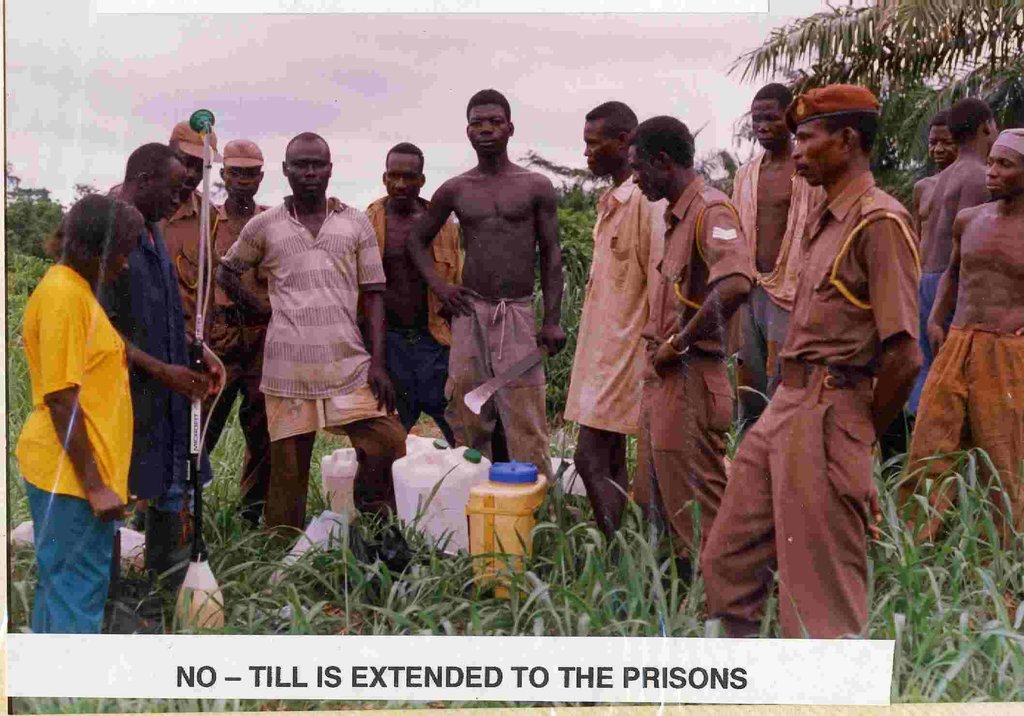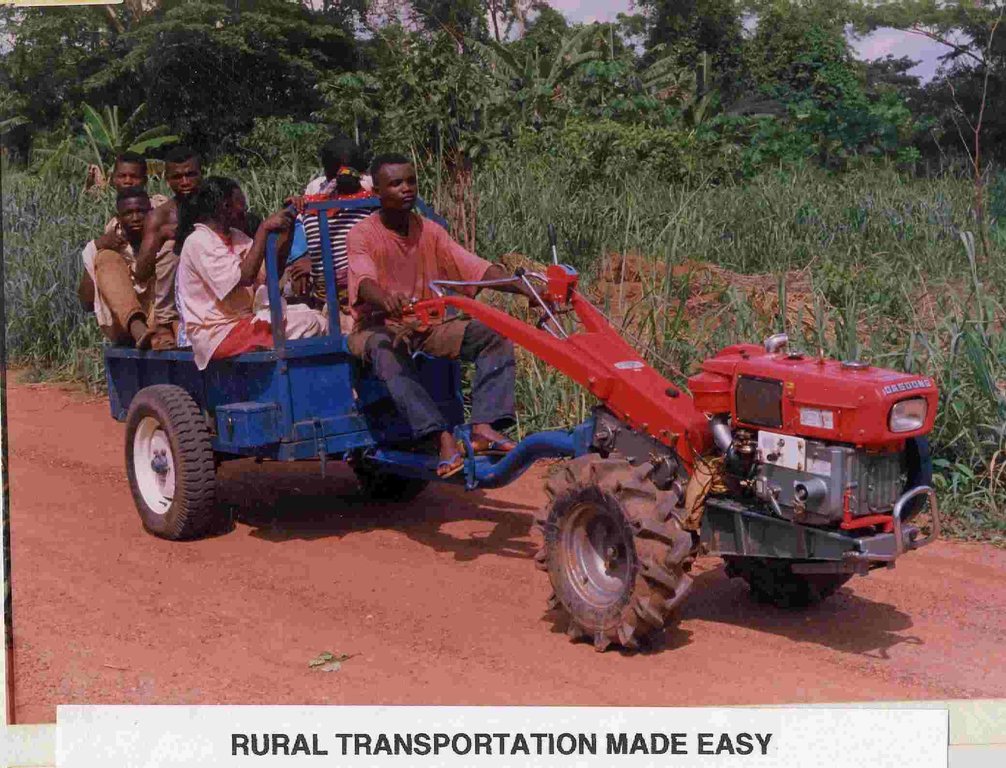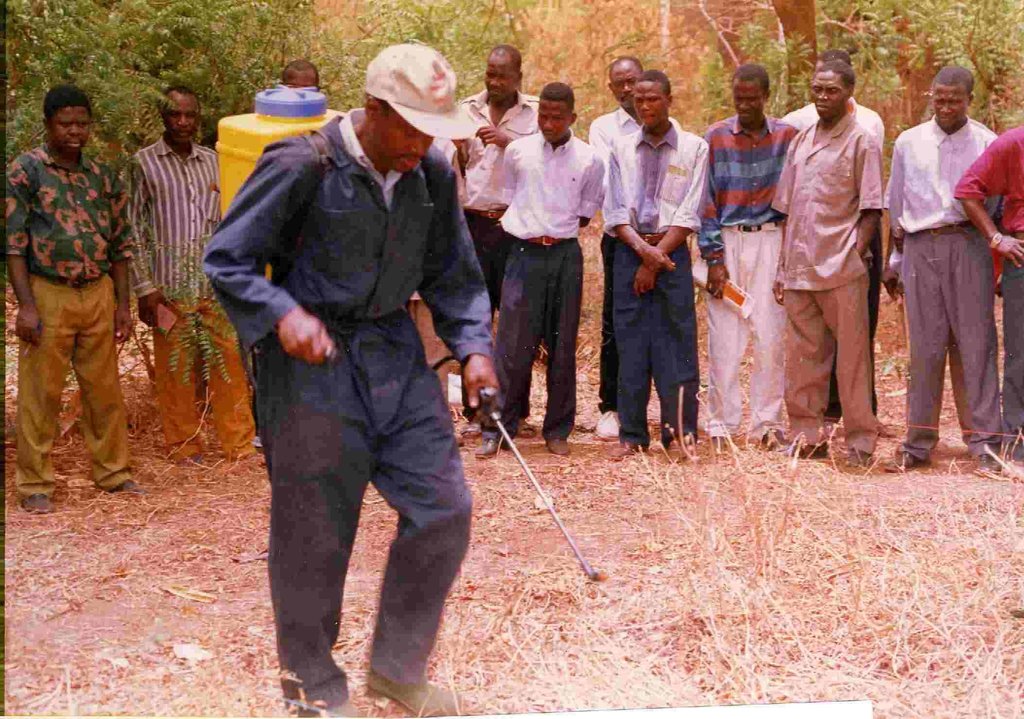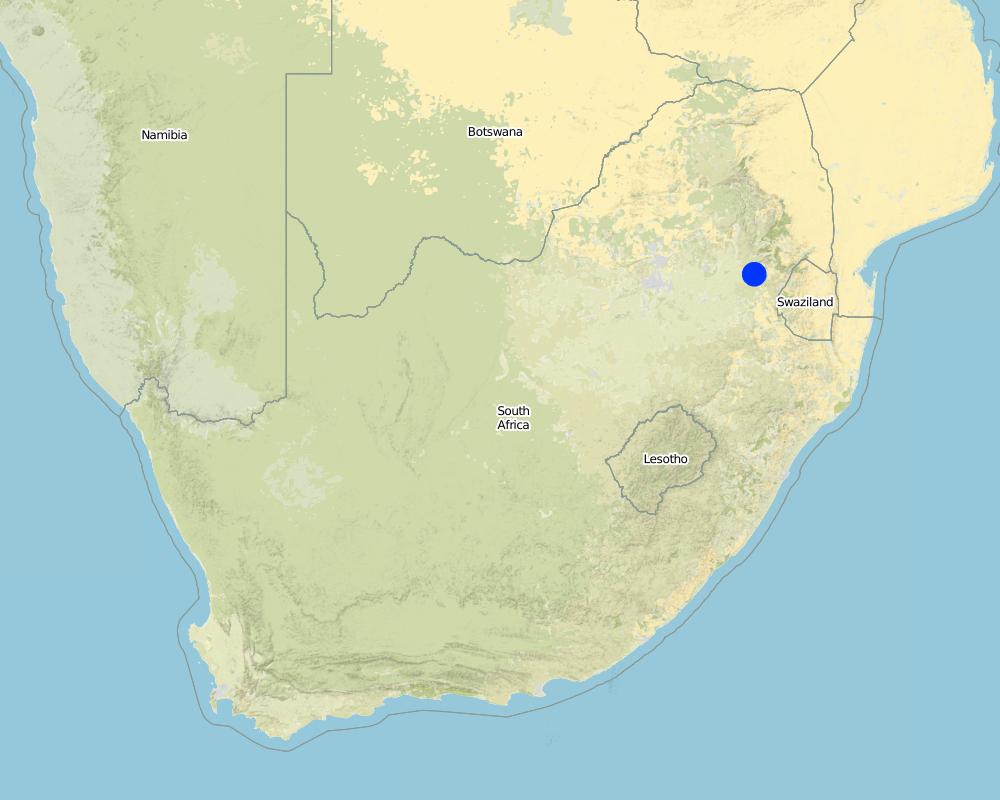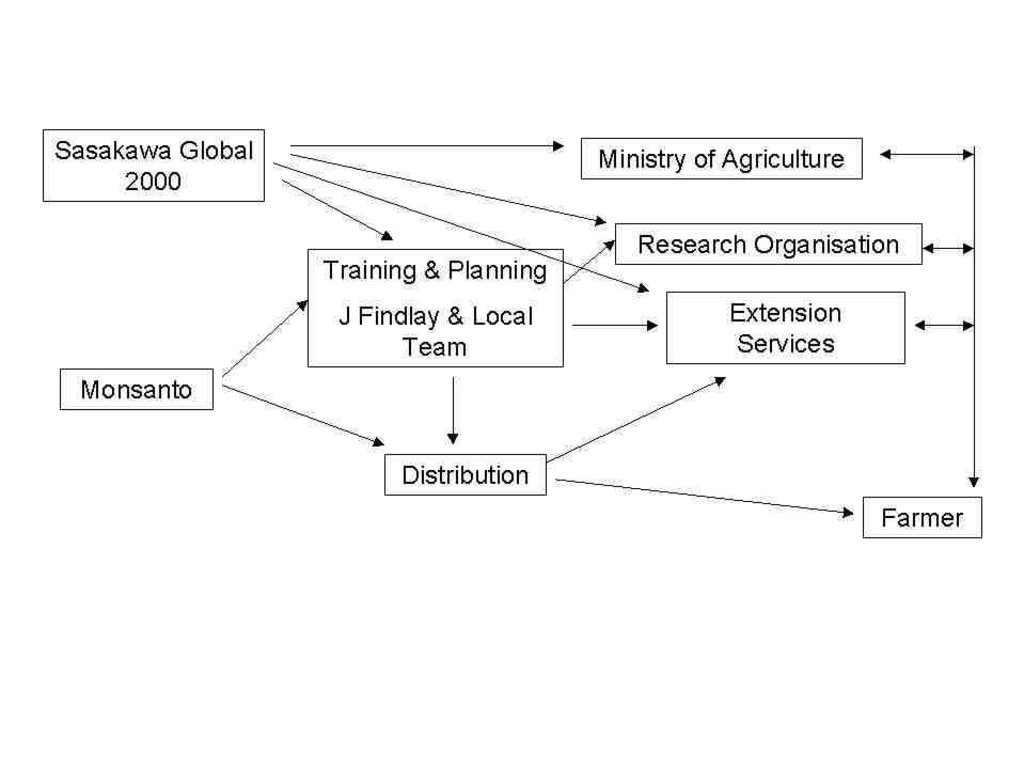All participants, with the emphasis of getting know-how to the farmer [南非]
- 创建:
- 更新:
- 编制者: Unknown User
- 编辑者: –
- 审查者: Fabian Ottiger
approaches_2416 - 南非
查看章节
全部展开 全部收起1. 一般信息
1.2 参与方法评估和文件编制的资源人员和机构的联系方式
关键资源人员
SLM专业人员:
Findlay James B R
南非
1.3 关于使用通过WOCAT记录的数据的条件
编制者和关键资源人员接受有关使用通过WOCAT记录数据的条件。:
是
2. SLM方法的描述
2.1 该方法的简要说明
Introduction of No-Till crop production systems to rural small scale farmers.
2.2 该方法的详细说明
该方法的详细说明:
Aims / objectives: Convert small-scale farmers from conventional ploughing to minimum tillage to no-till crop production. Introduce/upgrade technology by using certified seed, fertilisers, herbicides and pesticides. Associated cost increase results in a time saving which allows for additional production. Increased yields result in wealth creation. Develop marketing options for farmers e.g. a maize farmer can sell green maize (boiled or roasted) for human consumption, maize grain, maize meal, poultry feed or poultry, small or large livestock feed or the carcass (feedlots). Change perception that farmers produce food for own consumption only. They must produce a surplus for sale to generate an income which is wealth creation in the rural areas. Rich farmers = Wealthy Nation Poor farmers = Poor Nation Government policies must support rural farmers and ensure a good price for agricultural produce. Upgrade the knowledge/skills level of extension officers (E.O.s) - gain farmers respect for E.O.s. E.O.s must be measured on farmer performance. Improve the link and information flow from research organisations to E.O.s (and then to the farmer). Research organisations are encouraged to initiate no-till projects to support farmers and E.O.s, e.g. herbicides for weed problems; fertiliser deficiencies and recommendations; crop options.
2.3 该方法的照片
2.5 采用该方法的国家/地区/地点
国家:
南非
区域/州/省:
Mpumalanga
Map
×2.6 该方法的开始和终止日期
注明开始年份:
1998
2.7 方法的类型
- 基于项目/方案
2.8 该方法的主要目的/目标
The Approach focused mainly on SLM with other activities (Training. Field implementation. Technology implementation review. Input supply system. Finance support. Processing and marketing.)
Introduce no-till crop production systems. Make farming profitable. Create markers - input and output. Develop local knowledge / expertise. Reduce / stop soil erosion.
The SLM Approach addressed the following problems: Lack of political support (e.g. Tanzania). Policy/ Know-how's. Mechanisation is expensive - No-Till cheap - demonstrate. Soil and Water conservation. Crop surplus production - sale/process - financial benefit.
2.9 推动或妨碍实施本办法所适用的技术的条件
社会/文化/宗教规范和价值观
- 阻碍
Overgrazing - too many cattle/too little food Communal land - no responsibility
Treatment through the SLM Approach: Plant pastures - fewer cattle (!!!!)
财务资源和服务的可用性/可得性
- 阻碍
Banks do not educate 'poor poverty stricken' farmers in to financial management.
Treatment through the SLM Approach: Banks - educate farmers / take a risk!
机构设置
- 阻碍
Authorisation attitude by researchers
Treatment through the SLM Approach: Let farmers decide on the advantages of a system
法律框架(土地使用权、土地和水使用权)
- 启动
The existing land ownership, land use rights / water rights helped a little the approach implementation: hinder: moderate. Communal lands or insecurity of tenure does not encourage investment (money and time). After harvest - communal grazing!
- 阻碍
No legislation permitting genetically modified crops
Treatment through the SLM Approach: Introduce Demo legislation permitting modern agriculture
其他
- 阻碍
Tribal chiefs do not allow individual land ownership (freehold) = power
Treatment through the SLM Approach: Government must encourage private land ownership.
3. 相关利益相关者的参与和角色
3.1 该方法涉及的利益相关者及其职责
- 当地土地使用者/当地社区
Farmer organisations (small limited)
Working land users were work equally divided between men and women (The technology was introduced to). Women probably appreciate the labour and time saving more than men. Socialy disadvantaged involved if they have knowledge on the details of inputs e.g. insect pest and control measures that work.
- SLM专家/农业顾问
- 私营部门
Monsanto - Agriculture input suppliers
- 国家政府(规划者、决策者)
Ministry of Agriculture - Extension services
- 国际组织
SG 2000
如果涉及多个利益相关者,请注明领导机构:
Seskwane Global 2000 - organisation, government support. Monsanto - technology, training, inputs. Local - technology transfer.
3.2 当地土地使用者/当地社区参与该方法的不同阶段
| 当地土地使用者/当地社区的参与 | 指定参与人员并描述活动 | |
|---|---|---|
| 启动/动机 | 被动 | other |
| 计划 | 被动 | public meetings; Training of E.O. and farmers. |
| 实施 | 外部支持 | responsibility for major steps; Farmers conduct own demonstration with E.O. support. |
| 监测/评估 | 互动 | measurements/observations; Farmer supervised by E.O. E.O. compiles report. |
| Research | 互动 | on-station |
3.3 流程图(如可用)
3.4 有关SLM技术选择的决策
具体说明谁有权决定选择要实施的技术:
- 主要是SLM专家,咨询土地使用者之后
解释:
directive (top-down). Also by extension officers. Directive as-well as consultative. A successful method was developed and adopted for local conditions.
Decisions on the method of implementing the SLM Technology were made by by SLM specialists alone (top-down). directive (top-down). Also by politicians and leaders. Directive as-well as consultative. Many land owners/users have no knowledge of fertilisers, pesticides, seed cultivar choice. Guidance is essential.
4. 技术支持、能力建设和知识管理
4.1 能力建设/培训
是否为土地使用者/其他利益相关者提供培训?:
是
明确受训人员:
- 土地使用者
- SWC specialists, extensionists/trainers, politicia
培训形式:
- 在职
- 农民对农民
- 示范区域
- 公开会议
- 课程
涵盖的主题:
Agaronomis system. Herbicides and pesticide use. Processing. Fertilisers. Profitability.
4.2 咨询服务
土地使用者有权使用咨询服务吗?:
是
指明是否提供了咨询服务:
- 在土地使用者的土地上
说明/注释:
Name of method used for advisory service: Village demonstration; Key elements: 1 time E.O. with 5 - 8 farmers (1 farmers = failure), Supply inputs for 0.1 ha demonstration (tree), Farmer & E.O. must do there demo together (both learn); 1) Advisory service was carried out through: government's existing extension system 2) Advisory service was carried out through: government's existing extension system; Extension staff: mainly government employees 3) Target groups for extension: land users, technicians/SWC specialists; Activities: lectures, slide show, practicals, own demos; lectures, slide show, practicals, own demos
Advisory service is very adequate to ensure the continuation of land conservation activities; Yes : RSA, Ghana, Ethiopia, Kenya Almost: Malawi, Mozambique, Uganda No: Tanzania
4.3 机构强化(组织发展)
是否通过这种方法建立或加强了机构?:
- 是,适度
具体说明机构的强化或建立程度:
- 本地
具体说明支持类型:
- 财务
- 设备
4.4 监测和评估
监测和评估是该方法的一部分吗?:
是
注释:
bio-physical aspects were regular monitored through measurements
technical aspects were regular monitored through measurements
socio-cultural aspects were regular monitored through measurements
economic / production aspects were regular monitored through measurements
area treated aspects were regular monitored through measurements
no. of land users involved aspects were regular monitored through measurements
management of Approach aspects were regular monitored through measurements
There were many changes in the Approach as a result of monitoring and evaluation: Application techniques. Choice of cultivars. Fertiliser type and dose. Herbicide dose. Pesticide dose and type. Planting technique.
4.5 研究
研究是该方法的一部分吗?
是
提供进一步的细节,并指出是谁做的研究:
Solving local problems - fertiliser levels, weed problems, cultivar choice. Soil benefits come later.
Research was carried out both on station and on-farm
5. 融资和外部物质支持
5.1 该方法中SLM组成部分的年度预算
注释(例如主要的资助来源/主要捐助者):
Approach costs were met by the following donors: government (national): 20.0%; international non-government (-): 70.0%; local community / land user(s) (labour): 10.0%
5.2 为土地使用者提供财政/物质支援
土地使用者是否获得实施该技术的财政/物质支持?:
是
5.3 对特定投入的补贴(包括劳动力)
- 设备
| 具体说明哪些投入得到了补贴 | 程度如何 | 对补贴做出具体说明 |
|---|---|---|
| 工具 | 充分融资 | |
- 农业
| 具体说明哪些投入得到了补贴 | 程度如何 | 对补贴做出具体说明 |
|---|---|---|
| 种子 | 充分融资 | |
| 化肥 | 充分融资 | |
如果土地使用者的劳动力是一项重要的投入,那么是不是:
- 自愿
5.4 信用
是否根据SLM活动的方法给予信用值?:
否
6. 影响分析和结论性陈述
6.1 方法的影响
该方法是否帮助土地使用者实施和维护SLM技术?:
- 否
- 是,很少
- 是,中等
- 是,支持力度很大
No-Till
该方法是否改善了阻碍SLM技术实施的土地使用权/用户权问题?:
- 否
- 是,很少
- 是,中等
- 是,支持力度很大
Increase in productivity.
Did other land users / projects adopt the Approach?
- 否
- 是,很少
- 是,中等
- 是,支持力度很大
No-Till has become a 'high profile' system for sustainable conservation agriculture in Africa.
6.3 方法活动的可持续性
土地使用者能否维持通过该方法实施的措施(无外部支持的情况下)?:
- 是
6.4 该方法的长处/优点
| 土地使用者眼中的长处/优势/机会 |
|---|
| Time and labour saving |
| increase in yields, area and income |
| 编制者或其他关键资源人员认为的长处/优势/机会 |
|---|
| Increased yields (How to sustain/ enhance this strength: Adoption of technology - technical/extension support) |
| Increased areas under production (How to sustain/ enhance this strength: Financial incentive for farmers to increase production) |
| Increased prosperity |
| Time and labour saving |
6.5 该方法的弱点/缺点以及克服它们的方法
| 土地使用者认为的弱点/缺点/风险 | 如何克服它们? |
|---|---|
| Import supply | Expand distribution |
| Finance | Improve banking services |
| 编制者或其他关键资源人员认为的弱点/缺点/风险 | 如何克服它们? |
|---|---|
| Prices paid to farmers for surplus must be realistic | Maize grain: World price 100 dollar /ton Mozambique farmer 35 dollar /ton Malawi farmer 40 dollar /ton |
| Politicians do not see that many farmers can get wealthy 'farmers are poor' |
7. 参考和链接
7.1 方法/信息来源
- 实地考察、实地调查
- 与土地使用者的访谈
链接和模块
全部展开 全部收起链接
无链接
模块
无模块


